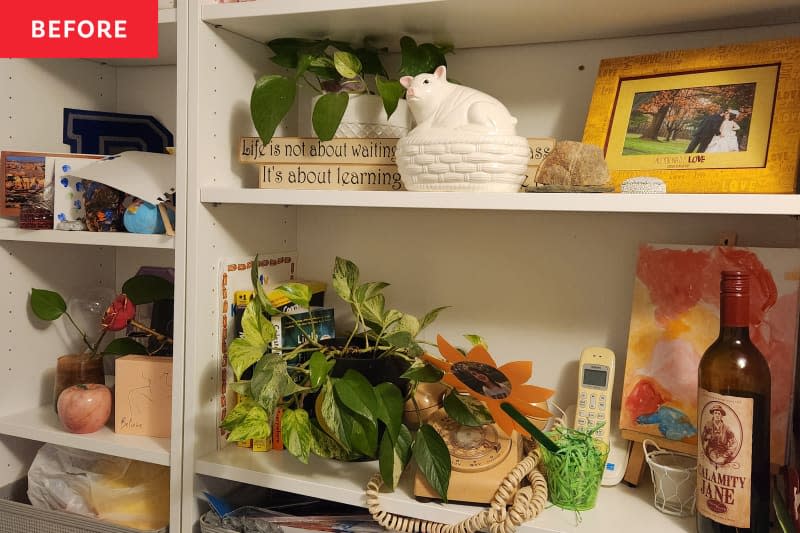I Tried Going “No Contact” with My Clutter, and It Made Me Miss My Stuff

When you see the phrase “no contact,” thoughts of strained relationships with friends or family probably immediately spring to mind. But what if I told you that you could go “no contact” with your belongings to see if removing them from your home will have a similarly positive impact on your life?
That’s the idea behind “no contact” decluttering, which borrows some of the basics from the popular “box and banish” method. Like the “box and banish” method, going “no contact” with your stuff involves boxing up the things you’re considering getting rid of to give you a chance to see what your life would be like without those items in it. But instead of revisiting your items when you’ve discovered that you really do miss them (or else, donating them when you realize you don’t), the “no contact” approach forces you to consider what your home looks and feels like without those items in it.

As someone who has gone “no contact” with people in my life in the past, I was a bit skeptical about this whole process. Comparing the contents of the decorative tray that sits on the back of my toilet seat to completely cutting off communication with a human being is hardly the same thing. First of all, those extra toiletries aren’t actually hurting my mental health. Secondly, inanimate objects don’t try to reach out to me to find out why I’ve stopped taking their calls, which makes it a little bit easier to box them up and set them aside for a bit while I reflect on their place in my life.
That being said, I did like the sound of the idea, and because I was gearing up to begin my annual spring cleaning duties, it seemed like the perfect way to cull some of the clutter that had been taking over all of the surfaces of my home.

How I Tried Going “No Contact” with My Stuff
I started by walking around the house and looking for areas where the clutter was specifically mine (and didn’t belong to my husband or kids). Then, I took those extra items and put them in a box.

It may be considered cheating, but I knew almost immediately that some of the things I was packing up were going to be goners. For example, I’ve had a ring holder sitting next to my kitchen sink for years because I wanted to be able to take my rings off when I do the dishes. However, the reality is that I only ever wear my rings when I’m getting dressed up, and I never do the dishes when I’m getting ready to head out somewhere special, so there was no need to have something like that taking up space in the kitchen.
Of course, there were also plenty of things that I was less sure about — an old cat statue I didn’t even realize was in my bathroom immediately made me nostalgic for my grandparents who had gifted it to me — that made me excited to test out the process.

After everything was boxed up, I did my best to avoid thinking about it while I went “no contact.” I wasn’t very successful when it came to those things that I had an emotional response to (I couldn’t stop thinking about that cat), but I was surprised to discover that I’d completely forgotten about plenty of other stuff.
After a little more than two weeks, I decided it was time to open the box. The items I’d forgotten about — like some toiletries that had dust on them from the bathroom — or didn’t care about went right into the trash. The stuff that I did care about found new homes elsewhere. For instance, I’d realized that I liked a glass pig dish that had been on a shelf in my office, but instead of keeping it on a bookcase where I hardly ever noticed it, I moved it onto my desk to use as a candy dish, making both me and the pig very happy about our newfound relationship with each other.

Final Thoughts
I must admit that while I did enjoy testing this process out, I don’t think it’s the right style for me. I benefited much more from the “hushing the house” method, which gave me much longer-lasting results, which wasn’t that cluttered to begin with. I think it’s because the “no contact” method made me feel guilty about boxing stuff up, whereas the “hushing the house” method felt a bit more forgiving about reconsidering my relationship with my stuff.

Either way, I’m still glad to have tried this method because I ended up with a bit less clutter taking up space around the house, and a new appreciation for other things that I’d grown blind to because of how and where I had them displayed.
